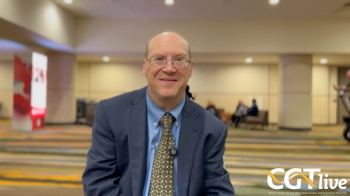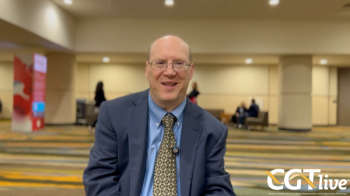
Survival Benefit Seen With Multimodality Therapy in NSCLC
CHICAGO--A role is emerging for multimodality therapy in the treatment of both resectable and unresectable stage III non-small-cell lung cancer (NSCLC). When given as an adjunct to radiotherapy or surgery, chemotherapy can downstage local disease and control systemic disease spread by eliminating micro-metastases or delaying the development of metastases, Ann Mauer, MD, a senior fellow in oncology at the University of Chicago, said at the International Conference of the American Thoracic Society and American Lung Association.
CHICAGO--A role is emerging for multimodality therapy in the treatment of both resectable and unresectable stage III non-small-cell lung cancer (NSCLC). When given as an adjunct to radiotherapy or surgery, chemotherapy can downstage local disease and control systemic disease spread by eliminating micro-metastases or delaying the development of metastases, Ann Mauer, MD, a senior fellow in oncology at the University of Chicago, said at the International Conference of the American Thoracic Society and American Lung Association.
For unresectable, locally advanced NSCLC, the current treatment standard is chemotherapy and radiotherapy. A metaanalysis in the British Medical Journal showed that adding chemotherapy to radiotherapy increased survival, although the effect was small--less than 4% of patients were alive at 2 years.
Dr. Mauer said that in a randomized CALGB trial, vinblastine and cisplatin (Platinol) followed by radiotherapy raised median survival for patients with unresectable stage III NSCLC from 9.54 months for radiotherapy alone to 13.74 months for bimodality therapy.
A portion of this trial has been duplicated by CALGB in a three-arm study of conventional radiotherapy, cisplatin plus radiotherapy, and hyperfractionated radiotherapy. With a minimum follow-up of 1 year, this trial of more than 450 patients is showing a significant increase in survival with chemotherapy plus radiotherapy. Median survival is 11.4 months for standard radiotherapy, 12.3 months for hyperfractionated radiotherapy, and 13.8 months for cisplatin plus radiotherapy. "We are looking forward to longer follow-up to see if the benefit in survival holds true," Dr. Mauer said.
Another strategy for treating unresec-table stage III NSCLC is concomitant chemotherapy and radiotherapy, which may allow for an interaction between the two modalities and enhance local or regional control of spread of the disease. This approach is promising because some chemotherapeutic agents may enhance the effects of radiation, Dr. Mauer said.
Concomitant chemotherapy and radiotherapy is still investigational, however, she said, because it may increase such side effects as esopha-gitis and myelosuppression. Doses of chemotherapy given concurrently with radiotherapy are lower than standard courses of chemotherapy, and these lower doses may not provide adequate systemic activity.
Preoperative Chemotherapy
For resectable stage III NSCLC, two randomized trials have demonstrated a survival benefit when cisplatin-based chemotherapy regimens were given before surgery. These trials were small in size, however, Dr. Mauer said.
A study of 50 patients at M.D. Anderson demonstrated a median survival of 64 months when surgery followed chemotherapy, compared with 11 months for surgery alone. A study of 59 patients in Spain showed a median survival of 26 months with chemotherapy and surgery, but only 8 months with surgery alone.
Cisplatin and etoposide (VePesid) given concomitantly with radiotherapy and followed by surgery achieved a median survival of 13 months in patients with stage IIIA NSCLC and 17 months in those with stage IIIB disease, according to a SWOG investigation. "Bimodal or tri-modal therapy is potentially superior to resection for local control and survival, but work still needs to be done to determine the best approach," Dr. Mauer said.
In particular, researchers need to define the role of surgery in the combined modality approach. Important issues related to the sequencing of chemotherapy also need to be resolved, she said. For example, is sequential chemotherapy better than concomitant? What are the optimal regimen and duration of therapy?
"Hopefully, with better understanding of the microbiology of the disease, we can define prognostic factors, predict survival, and determine whether a patient may or may not respond to a particular therapy," she said.
Newsletter
Stay at the forefront of cutting-edge science with CGT—your direct line to expert insights, breakthrough data, and real-time coverage of the latest advancements in cell and gene therapy.

















































